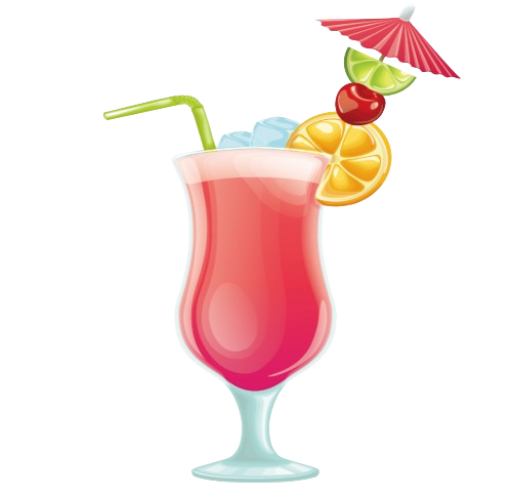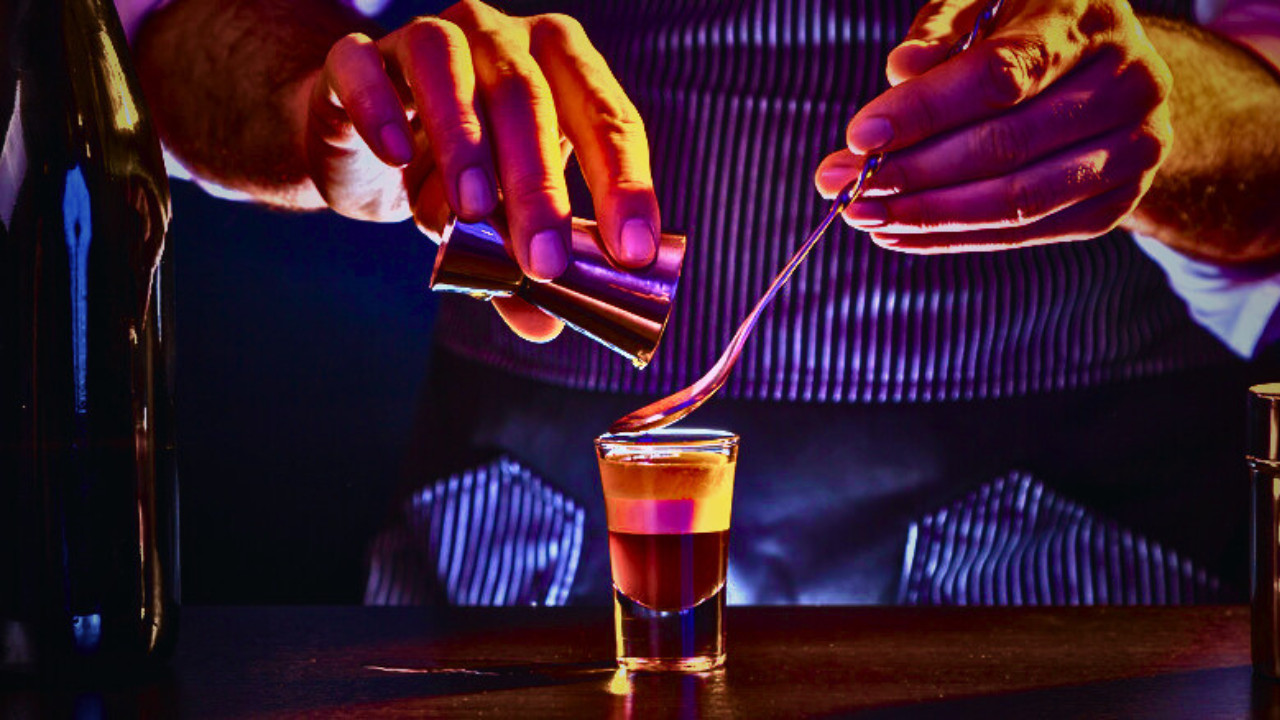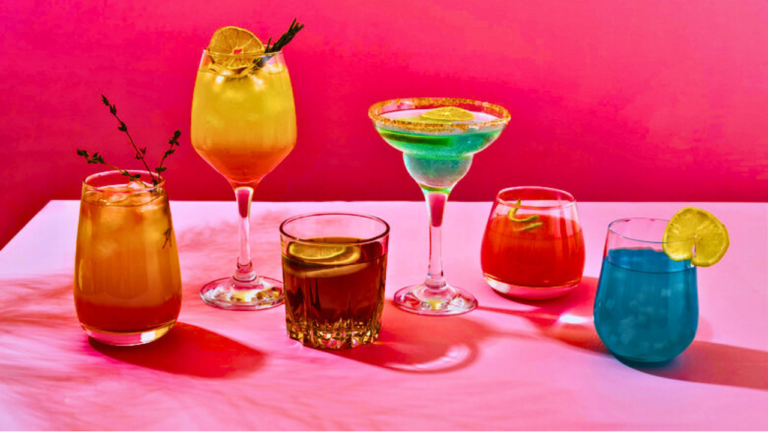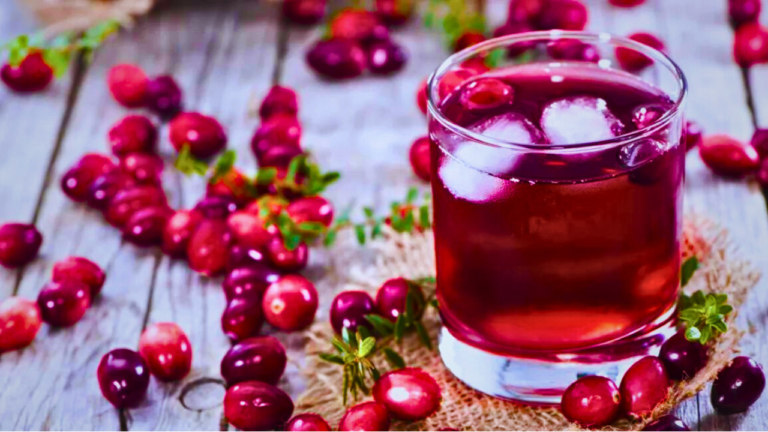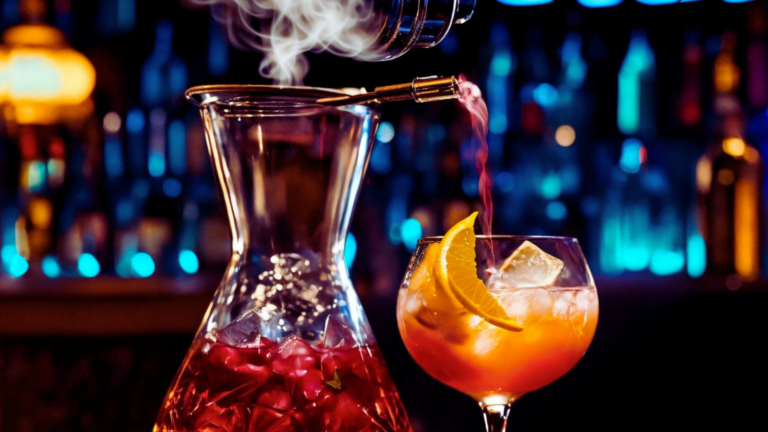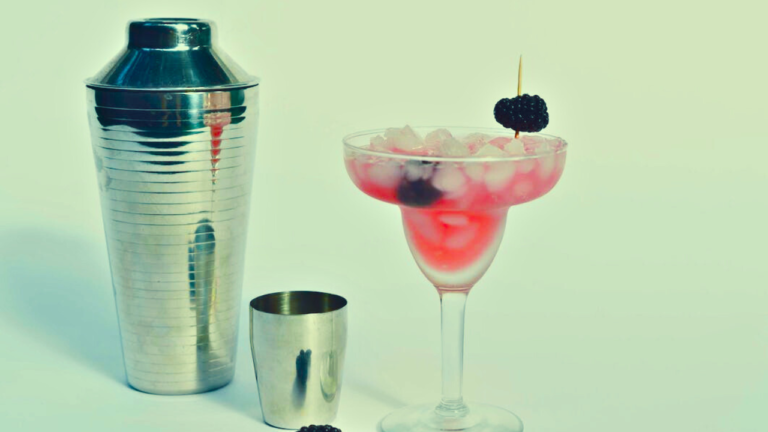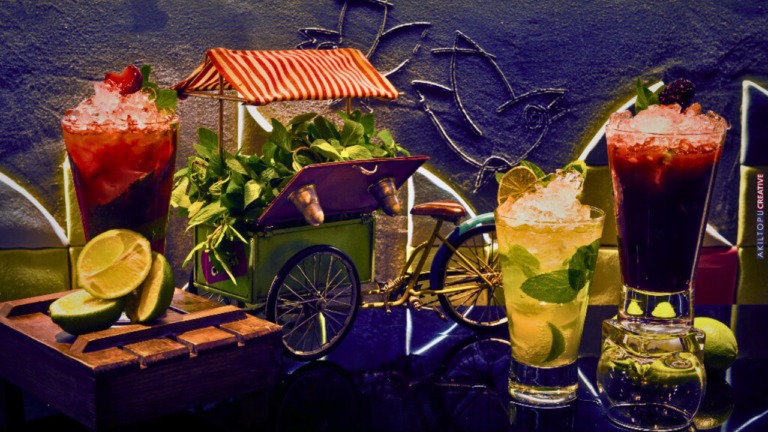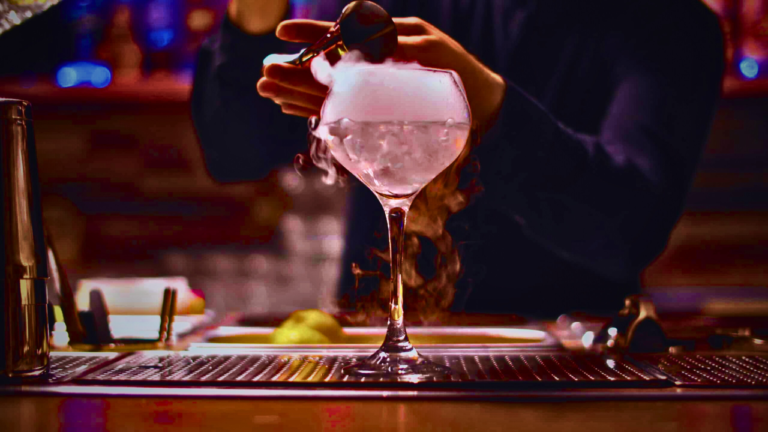How Much Is A Dash When Making A Cocktails?
If you’ve ever found yourself behind a bar or in your own kitchen trying to follow a cocktail recipe, chances are you’ve come across the term ‘dash’. This small but significant measurement can make or break the taste of your drink.
However, understanding its exact measurement isn’t always clear. This article aims to demystify what constitutes a ‘dash’ in cocktail making, how it affects the overall flavour of your drink, common measuring tools, cross-cultural variations, as well as common pitfalls to avoid.
“Making cocktails is a fine art that utilizes science to create a symphony of flavors”
As with any good symphony, it’s all about balance. In the world of cocktails, the ‘dash’ plays a pivotal role in this balance. Precision is key, but don’t worry, we’re here to help you master the art of the ‘dash’. On your journey through this guide, we’ll explore:
- Understanding the Standard Measurement for a Dash in Cocktail Making
- How a Dash Measurement Impacts the Flavor of your Cocktail
- Tools Used for Measuring a Dash in your Drinks
- International Variations in Dash Measurements
- Common Mistakes to Avoid when Measuring a Dash
Read also: Where Did Cocktails Originate?
What is the standard measurement for a dash in cocktail making?
In cocktail making, a ‘dash’ is a small but fairly well-defined amount. Though it may seem vague, most experienced mixologists agree that a dash typically measures around 1/8 of a teaspoon, or approximately 0.6 milliliters. It’s a subtle quantity, pinpointing the fine line between a perfectly balanced cocktail and one that’s overpowered by a single ingredient .
Keep in mind: a dash is more about control than quantity. While its exact volume might vary, the most critical aspect is consistency.
Because of its small size, even a slight increase or decrease in a dash can significantly impact the flavor of a cocktail. That’s why, when it comes to measuring a dash, precision is key. Even though it’s a small unit, its impact can be tremendous.
Why does a dash matter?
A dash isn’t just about measurement; it’s about balance. Cocktails, at their core, are about harmonizing different flavors to create something uniquely tantalizing. Adding just the right amount of a particular ingredient, like bitters, for example, can do wonders for your cocktail.
Think of it like this:. A grain of salt might seem insignificant when cooking, but if you add just the right amount, it can enhance and elevate the flavors of your dish.
Similarly, a dash of the right ingredient can lift your cocktail game to the next level.
How does the dash measurement affect the overall taste of a cocktail?
Distilling it down to its pure essence, the dash measurement is more than just a nitty-gritty detail in cocktail making; it’s a true difference-maker. With its power to sway the end result, it might surprise you how much a seemingly small unit like a dash can turn the entirety of a cocktail’s flavour profile on its head!
Think of a dash as the magic spice in your cocktail recipe. Each dash of a particular ingredient, be it bitters, citrus, or even simple syrup, orchestrates a unique dance of flavors that season your cocktail, altering the overall taste and balance of your drink.
For example, consider the classic Old Fashioned cocktail. The recommended amount of Angostura bitters is usually ‘just a dash’. Now, interpret that as a ‘generous dash’ and you’d risk overwhelming the sweetness of the drink with a rather bitter undertone. On the flip side, be too cautious with your dash, and your drink might end up lacking that characteristic depth and complexity the bitters were supposed to lend.
So, how does the dash measurement affect your cocktail’s taste?
- Taste Balance: Proper dash measurements ensure the right balance of sweet, sour, bitter, and alcohol flavors in your cocktail. An extra dash could potentially overpower the other flavors, while an underdash might leave a flavor void.
- Complexity: Each dash enters the flavor symphony of your cocktail with its own unique note. The precise dash of an ingredient can transform an ordinary cocktail into an extraordinary flavor orchestra.
- Consistency: Just like a dash adds balance and complexity, it also contributes to the consistency of taste. If you want your cocktails to taste the same every time, accurate dash measurement is crucial.
So do keep in mind that, whether you’re an experienced mixologist or a cocktail enthusiast at home, the dash—no matter how minuscule it may seem—plays a key role in defining the heart and soul of your cocktail’s taste!
What tools are commonly used to measure a dash in cocktail making?

When crafting cocktails, accuracy is pivotal; a dash is a crucial element contributing to the balance of flavors within a drink. It’s equivalent to about 1/8 of a teaspoon or 0.625 ml. You’ll find that there are several tools commonly used to manage this micro-measurement.
- Bitters Bottle: A staple in every bartender’s toolbox, a bitters bottle is equipped with a dasher top—a special lid designed to dispense bitters in controlled dashes. This tool allows for consistent and accurate dashing, making it an ideal option to accurately measure a dash.
- Dasher Bottle: Similar to a bitters bottle, a dasher bottle is a specifically designed piece of kit. It has a specially designed pouring spout that measures out a specific quantity with each tip of the bottle. Keep in mind that there are different sizes of dasher bottles on the market, each with a varying dash measurement.
- Bar Spoons: A bar spoon, although a bit less accurate, is another common tool used for “dashing.”. While this method is less precise than using a dasher or a bitters bottle, it works in a pinch when those tools aren’t readily available.
Above all, remember that practice and consistency are key elements in the art of cocktail making. By understanding your tools and how they impact the balance of your cocktails, you’ll be well on your way to mixing like a professional.
Read also: How To Price Cocktails?
Are there variations in dash measurements across different countries or cultures?
Indeed, cocktail making is an art that is appreciated worldwide, and like many arts, the styles and techniques used can differ depending on the region. This extends to the amount used to represent a dash in different United States countries.
In the United States, a dash is often understood to be about 1/8th of a teaspoon, or around 10 drops. Meanwhile, across the pond in the United Kingdom, a dash might be considered slightly more, about 1/6th of a teaspoon or 12 drops.
As you move around the globe, these differences continue. In countries like Australia and New Zealand, a dash tends to align more with US measurements, while some countries in Europe might use a dash to denote a slightly larger amount.
Remember, these are just general rules of thumb and actual dash sizes can vary based on the bartender’s style, the type of bottle, and the specific recipe in use. Not to mention personal taste!
It might feel like a small detail, but as we’ve established, every little element matters when it comes to crafting the perfect cocktail. Here are those measurements you might find useful:
| Country | Dash Measurement |
|---|---|
| United States | 1/8th of a teaspoon (~10 drops) |
| United Kingdom | 1/6th of a teaspoon (~12 drops) |
| Australia | 1/10th of a teaspoon (~8 drops) |
| Germany | 1/5th of a teaspoon (~14 drops) |
In the end, the dash is as much about personal style and taste as it is about accuracy. So, go ahead and embrace the unique cocktail culture of your own region!
What are some common mistakes made when measuring a dash in cocktail making?

If cocktail making is an art, proper measurement is the brushstroke that finalizes the masterpiece. As befits any artistry, missteps can occur. When it comes to dashes, there are a few mistakes that, while common, can significantly affect the flavor of your creation. Let’s walk through them.
- Heavy-Handed Pouring: One prevalent error in cocktail making is going overboard with the dashes. Too many dashes can overpower the drink, make it too pungent, and obscure the other ingredients’ flavours. Remember, the intention of a dash is to complement, not dominate. Aiming for a restrained, delicate pour can avert this pitfall.
- Inadequate Shaking: Another blunder lies not in the pouring of the dash but in the mixing of the cocktail. Neglecting to adequately shake or stir the drink can result in an inconsistent distribution of flavors. The dram of bitters you added might end up concentrated in one area, delivering an unpleasant burst of flavor when sipped.
- Substitution Confusion: Another common mistake is improvising with the dash measurement. Substituting it with a teaspoon or another unit might seem harmless, but keep in mind that a dash is its own unique measurement in cocktail making. If a recipe calls for a dash, it’s best to use a specialized dash measuring tool or a dash-style bitters bottle for accuracy.
- Skipping the Dash: Lastly, omitting the dash altogether is a common mistake. The dash, while small, is mighty; it adds depth and complexity to your drink that won’t be replicated by increasing the quantities of other ingredients. Like omitting salt when cooking, skipping a dash in cocktail making can leave your concoction lacking dimension.
The key to successful cocktail making, like in any form of cooking, is precision and practice. Avoiding these common mistakes and paying proper attention to your dashes will make a great difference in your cocktail-crafting journey. Happy mixing!
Conclusion
In conclusion, the dash is a small yet crucial ingredient in the art of cocktail-making. It may seem inconsequential, but it can significantly alter the taste and balance of a cocktail. The smallest variance in quantity can transform a cocktail from a bitter explosion to a sweet symphony. This is why precision is paramount when measuring a dash.
Consistency is the key when measuring a dash. Though it might seem insignificant, the difference a dash can make is not to be underestimated. Once you understand what constitutes a ‘dash’, it changes the game of cocktail making entirely.
While there are variations in dash measurements across different countries or cultures, what’s important is understanding and maintaining consistency in your own mixology practice. This will enable you to create concoctions that are consistent in taste and quality, irrespective of where in the world you are.
As mentioned earlier, common tools used to measure a dash in cocktail making are usually bitters bottles or dash bottles that feature a regulator that restricts flow, giving a precise “dash” of liquid. While this is the conventional approach, practicing with such tools and getting a feel for your own technique can also be beneficial. Remember, this is an art, and like any art, personal interpretation can often lead to delicious results.
Mistakes are part of the learning process. Overpouring a dash is a common mistake in the cocktail-making process, as it can lead to overpowering flavors. The golden rule is to pour less than you think, as you can always add more. Just don’t forget that adding more means balancing out the flavors with the rest of the ingredients.
The beauty of cocktail making lies in its precision—a tantalizing dance of measuring, pouring, and stirring. Every dash counts! It’s a world where art meets science, taste meets precision, and where every drop can take a drink from ordinary to extraordinary. So, the next time you make a cocktail, remember, it’s not just a dash; it’s the dash that makes the difference.
Read also: Do Daily’s Frozen Cocktails Get You Drunk?
FAQs
What does a dash refer to in cocktail making?
A ‘dash’ is a term used in cocktail making to denote a small but significant amount of a specific ingredient, typically a liquid such as bitters, syrups, or vermouth.
How much is a dash in cocktail making?
In cocktail making, a ‘dash’ typically measures approximately 1/8 of a teaspoon or about 10 drops from a dasher bottle.
Can I use a dasher bottle to measure a dash?
Yes, a dasher bottle is the preferred tool for many bartenders, as it precisely measures a ‘dash’ to provide consistency in cocktail flavors.
Can the measurement of a dash vary based on the type of cocktail?
Yes, the amount and impact of a dash can somewhat vary based on the type and style of cocktail. A cocktail that heavily relies on its bitter component, for instance, may require a larger dash.
How much of a difference can a dash make in a cocktail?
Despite its small quantity, a dash can greatly impact the overall taste and balance of a cocktail. It can provide depth, complexity, and even completely transform the profile of a drink.
Can I measure a dash with a teaspoon if I do not have a dasher bottle?
Yes, you definitely can. However, consider that a dash is about 1/8 of a teaspoon, so adjust your measurement accordingly to maintain the balance of flavors in your cocktail.
Does the measurement of a dash differ in different countries?
While the ‘dash’ is generally considered a universal measure in cocktail making, the exact quantity can vary slightly based on cultural preference, bartender style, and even the type of dasher bottle used.
What constitutes a ‘heavy dash’ in cocktail making?
A ‘heavy dash’ typically refers to a slightly larger quantity compared to a regular dash. This often means a more generous pour from a dasher bottle or a slightly heaped 1/8 teaspoon measurement.
Are there any other terms for making a cocktail similar to a dash?
Yes, other measurements such as a’splash’, a ‘pinch’, or a’smidgen’ are also used in cocktail recipes to denote small quantities. Each has its own approximate measurement and effect on the cocktail’s profile.
Must I always measure a dash precisely in cocktail making?
While precision helps consistency, cocktail making is also an art. Depending on your taste preference or those of your guests, you might adjust ‘dash’ measurements slightly. Remember, the goal is to create a balanced and enjoyable drink.

Hello, friends! I’m Tom Elba, the driving force behind cocktailscape.com, your virtual hub for all things cocktails. If you have a passion for mixology or simply enjoy sipping on a well-crafted drink, then you’ve landed in the right place.
At Cocktailscape, I’m dedicated to sharing my love for the art of cocktail-making through tantalizing recipes, expert tips, and vibrant stories from the world of mixology. Whether you’re a seasoned bartender or an enthusiastic home cocktail enthusiast, there’s something here for everyone.
From classic concoctions like the Old Fashioned and the Martini to innovative twists and modern creations, I’m here to inspire you to shake, stir, and sip your way through a world of flavor.
But Cocktailscape is more than just recipes—it’s a celebration of culture, creativity, and community. I delve into the history behind iconic cocktails, explore emerging trends in the industry, and spotlight talented bartenders from around the globe.
So whether you’re looking to expand your cocktail repertoire, host the perfect soirée, or simply unwind with a refreshing drink after a long day, Cocktailscape has got you covered. Cheers to endless possibilities and unforgettable sips—let’s raise a glass together at cocktailscape.com!
